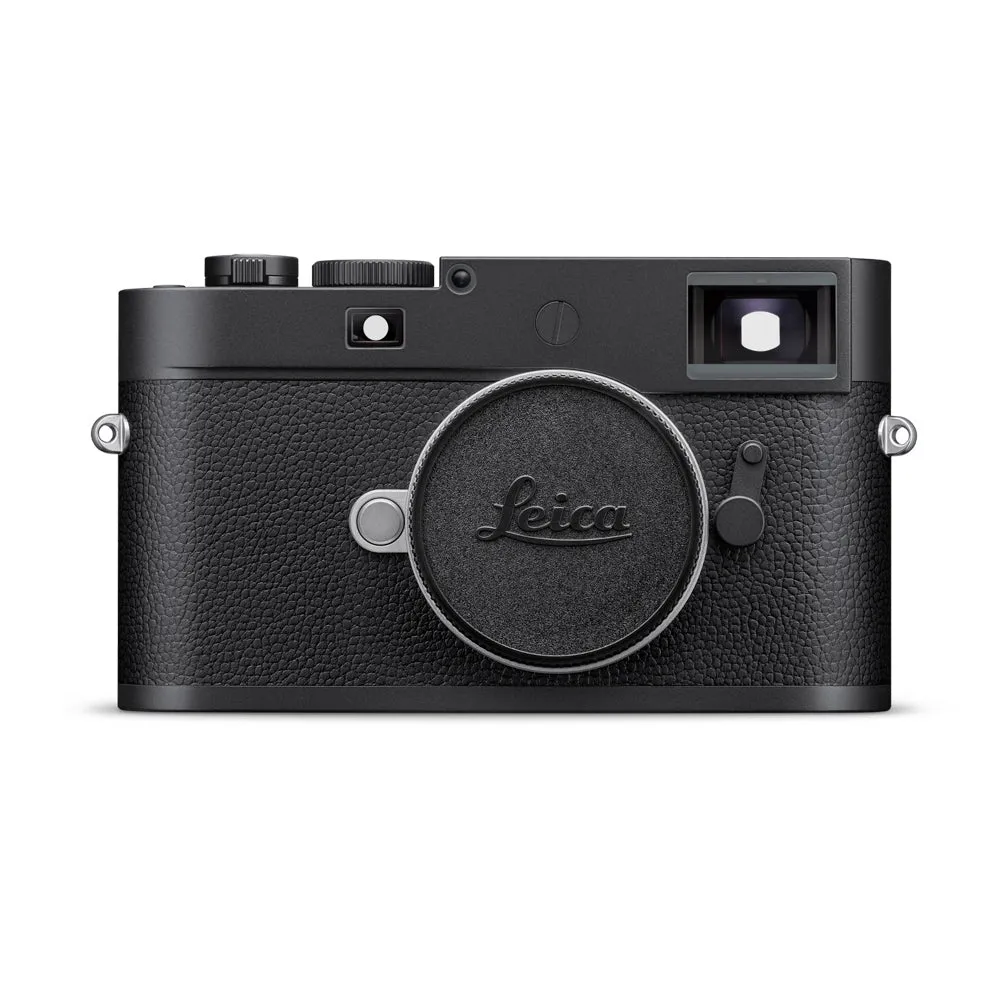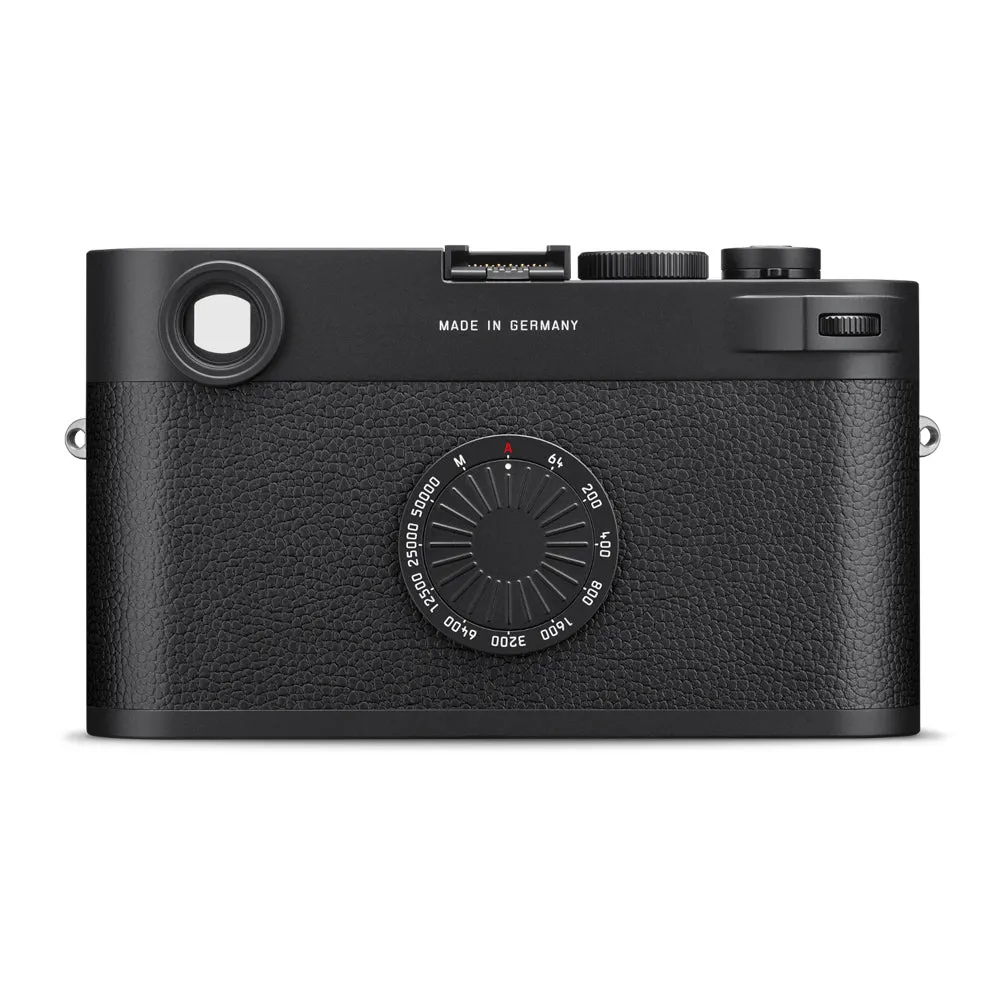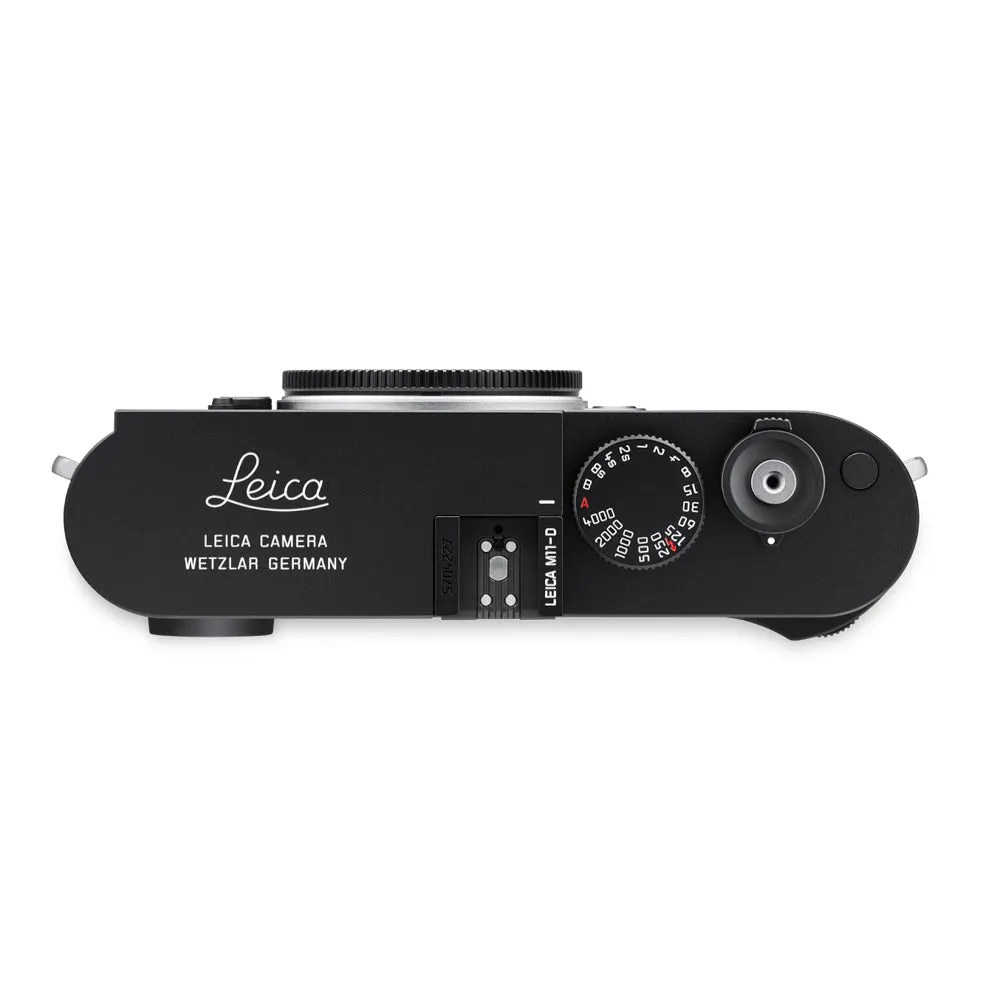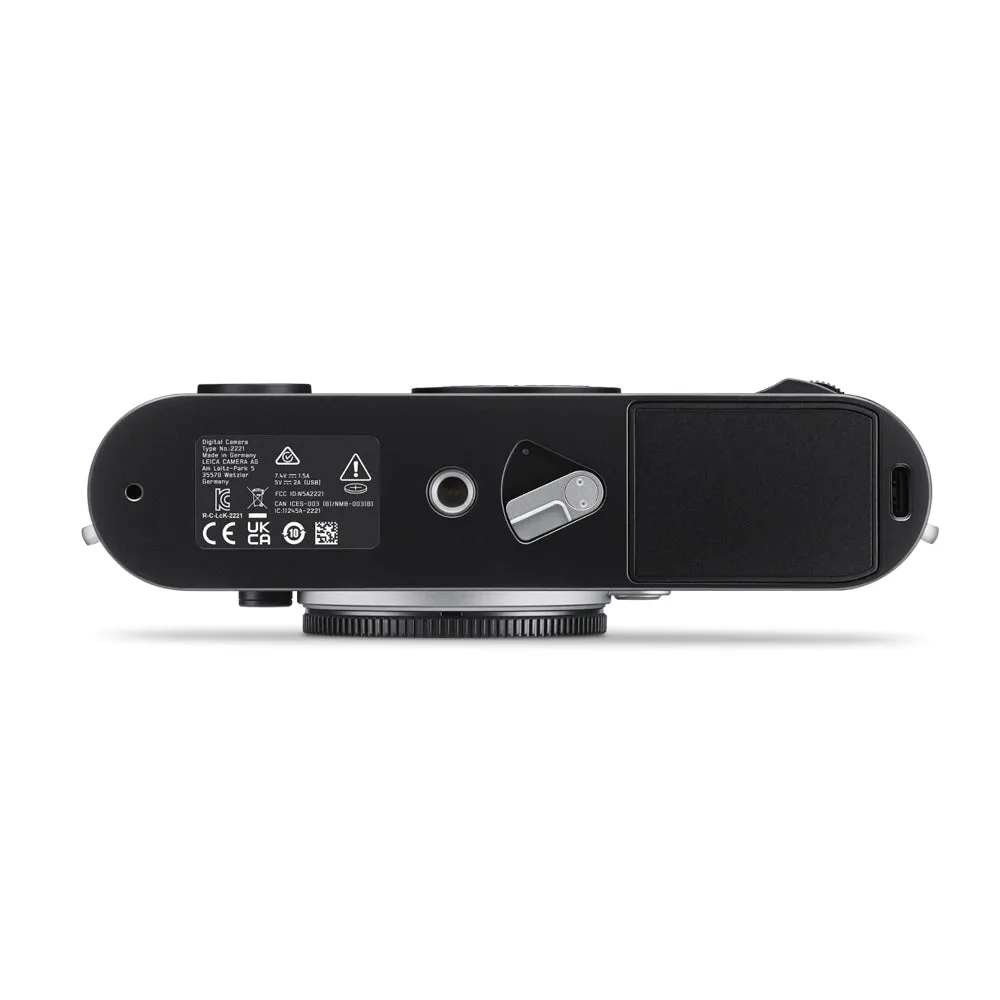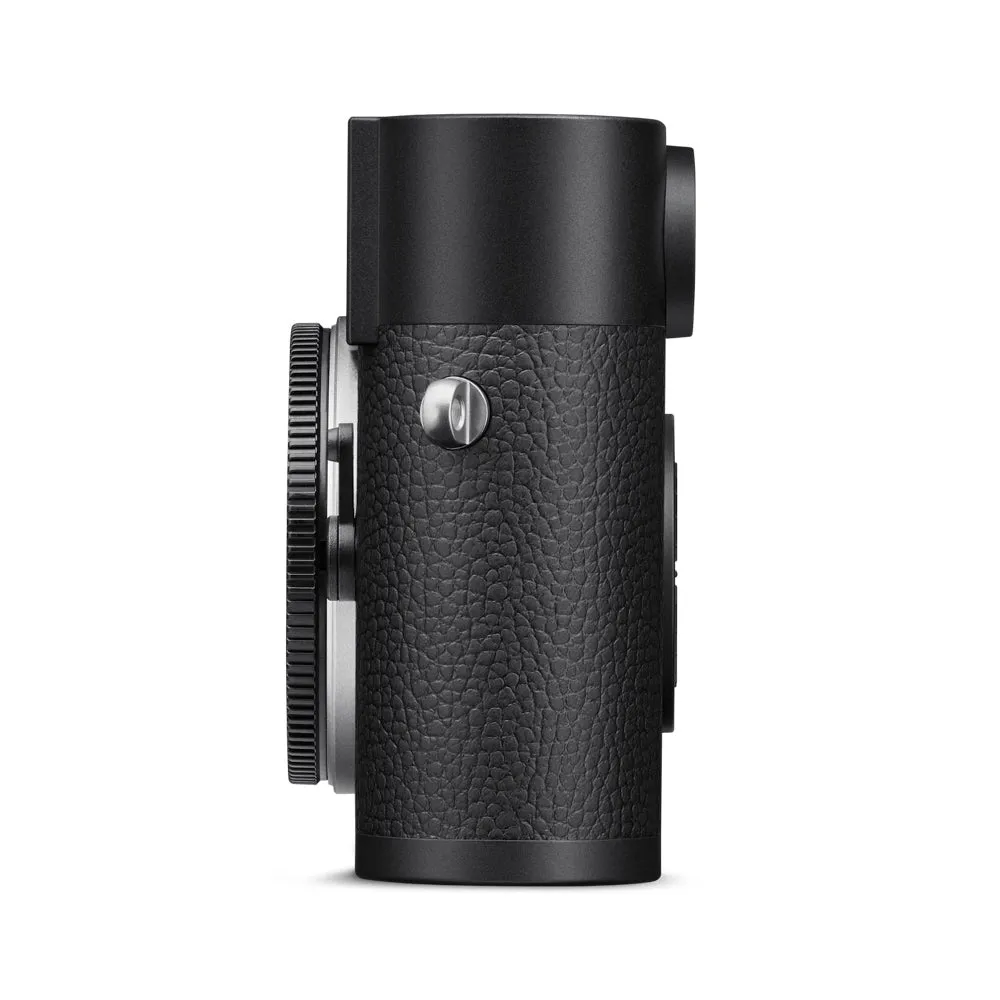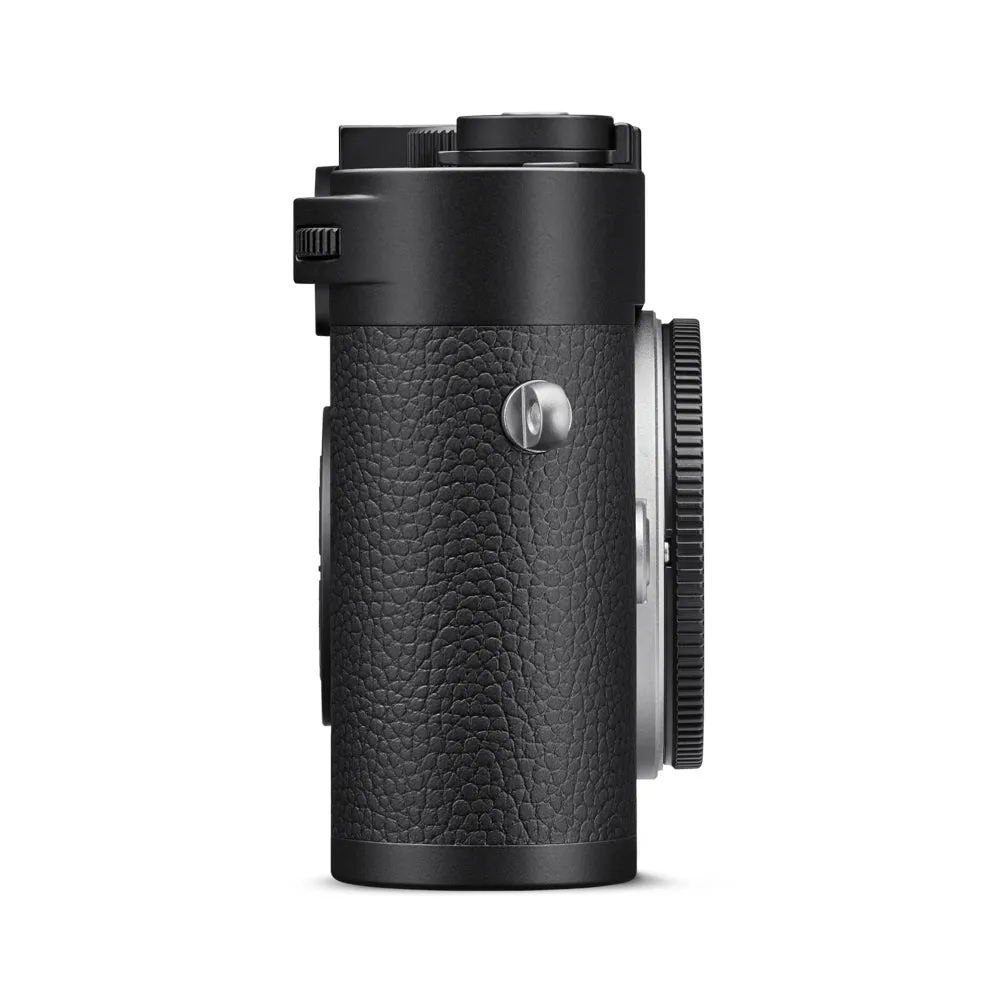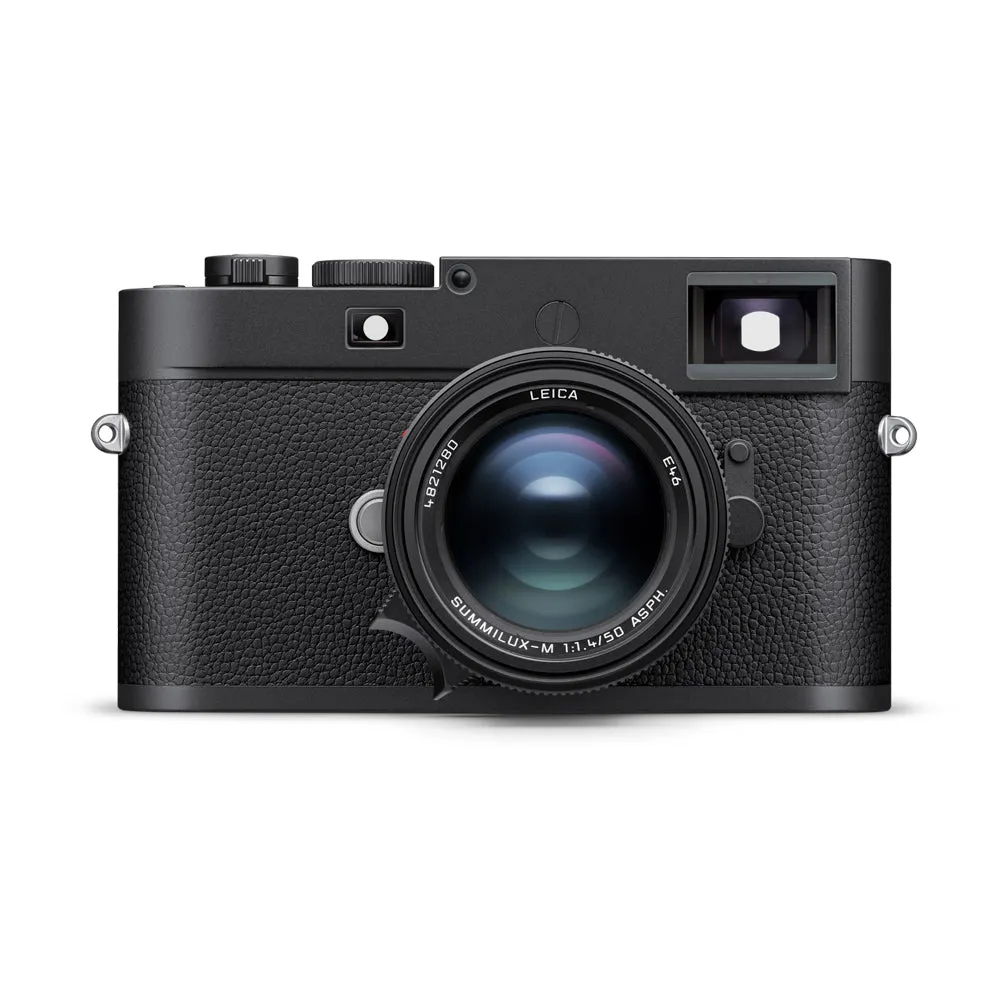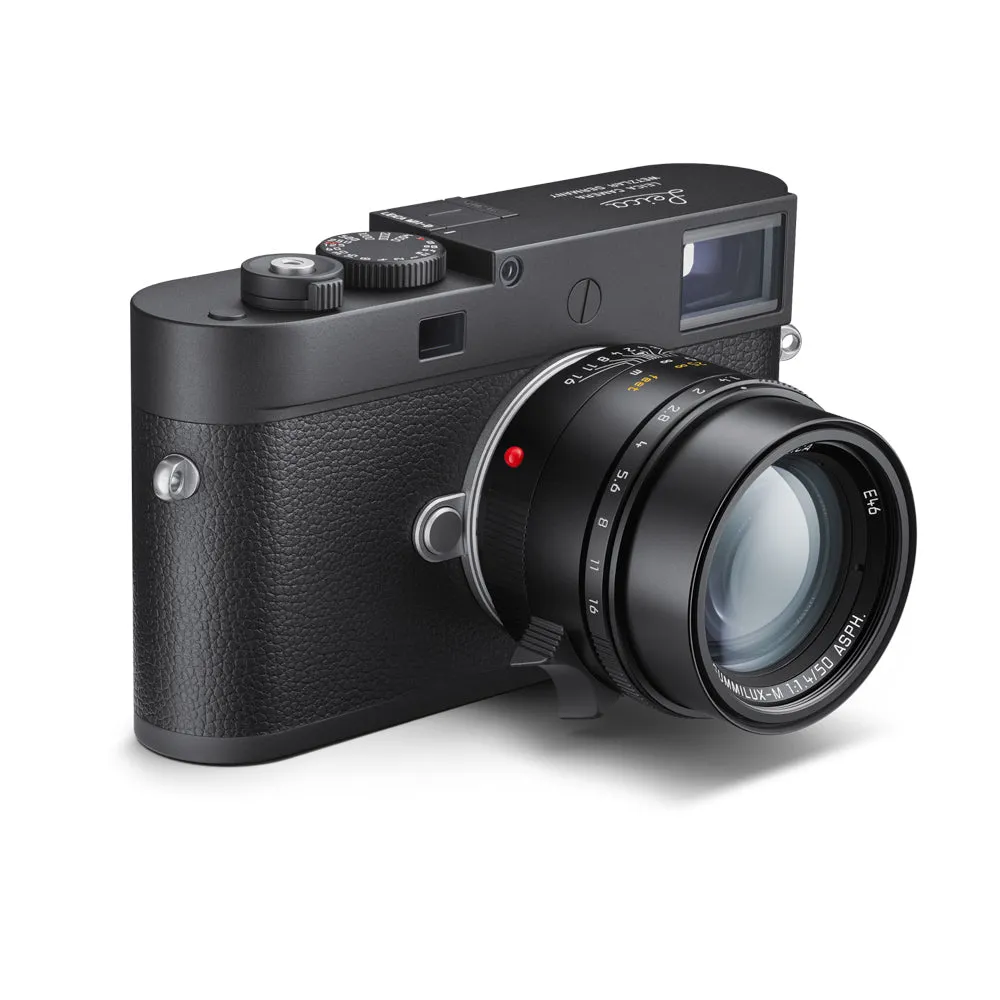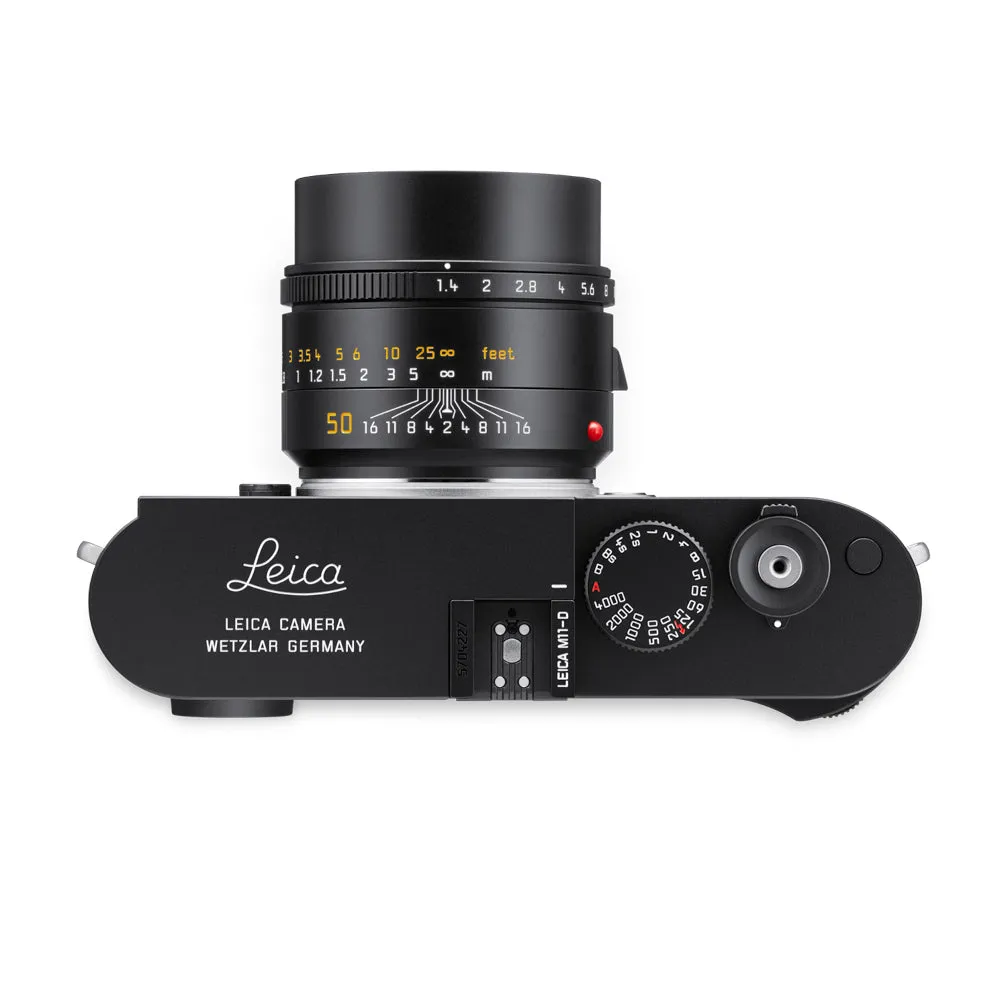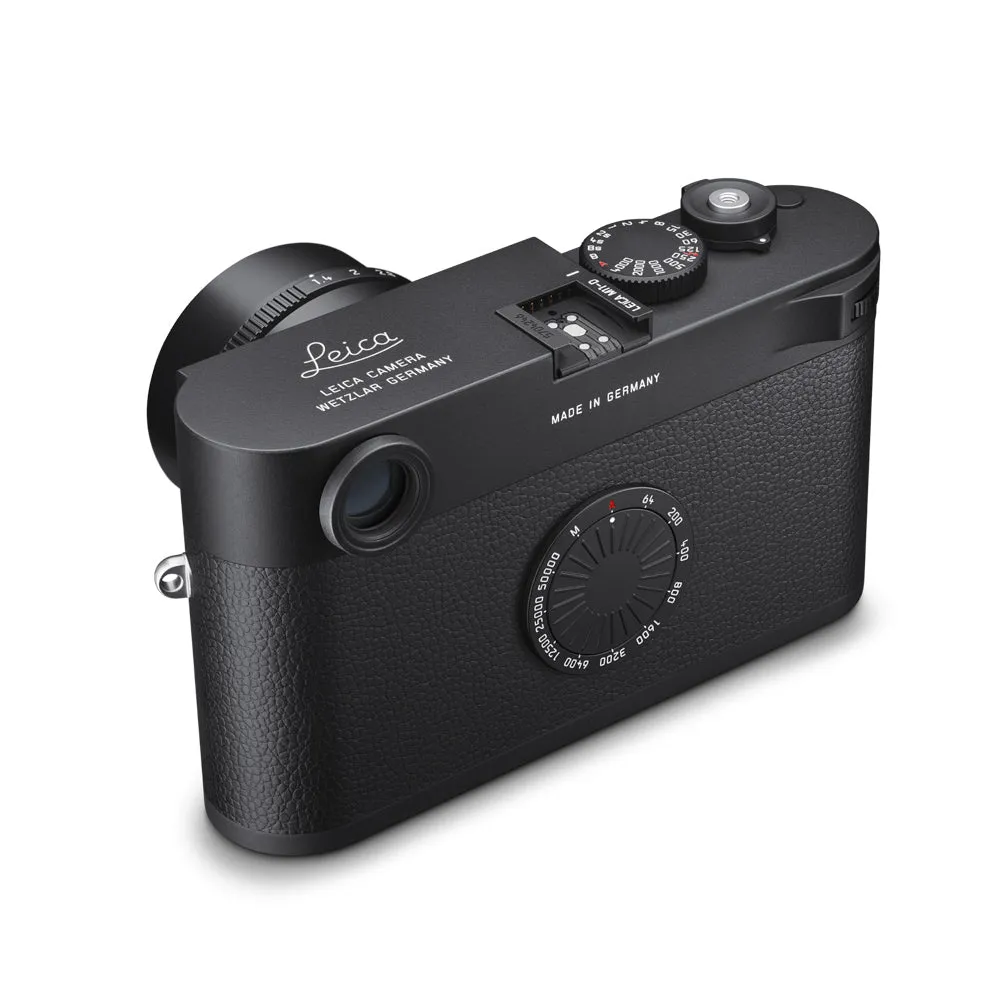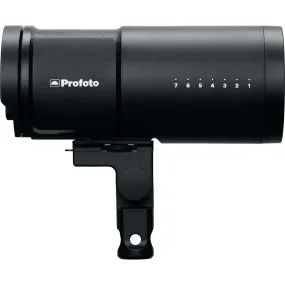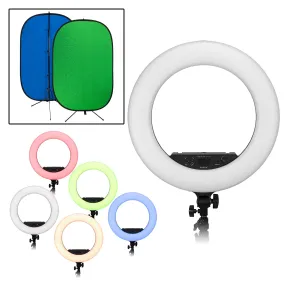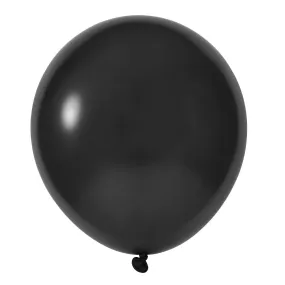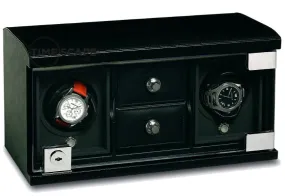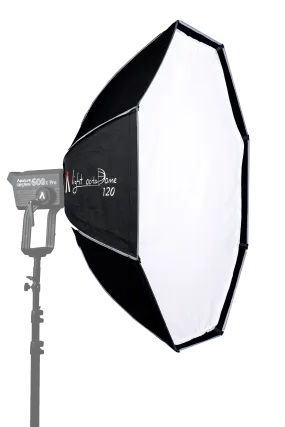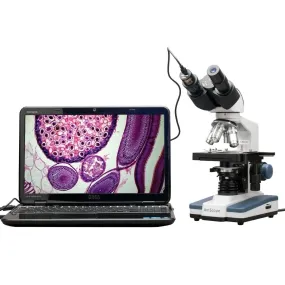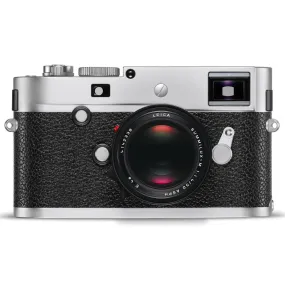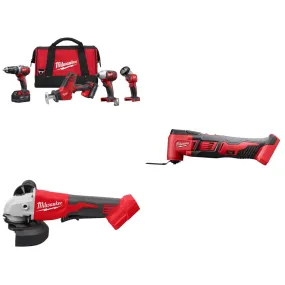Product Details
+
-
Read more about the Leica M11-D on Red Dot Forum:
By omitting a display on the back, photography with the Leica M11-D focuses on the elementary aspects of pictorial design such as composition, aperture, shutter speed, and ISO. In place of the display, an easy to access ISO dial is showcased on the back of the camera. It offers exceptional customizability, modern connectivity and cutting-edge hardware-based authenticity technology, originally introduced into the camera market with the Leica M11-P as Leica Content Credentials. With its clean lines, matt black painted, scratch resistant surfaces and the absence of the red Leica logo, the new Leica M11-D embodies a sense of discreetness within the timeless Leica product design.
The Leica M11-D enables images with a resolution of either 60, 36 or 18 MP. With a cache of 3 GB, continuous shooting of up to 5 pictures per second with 60 MP is possible. The internal memory of 256 GB provides ample space for one’s images. In addition, the powerful battery makes sure that the Leica M11-D is always ready at the crucial moment. The new member of the particularly compact full-frame system lies comfortably in the hand. With just 19.05 ounces (with battery), it undercuts its predecessor by 4 ounces.
The Leica M11-D is extremely convenient to use and adapts to personal preferences thanks to customizable function key assignment. As an M-camera, the Leica M11-D also offers access to Leica M fixed focal lengths introduced since 1954. Paired with the full-frame BSI CMOS sensor featuring Triple Resolution Technology, which has been specifically designed for the Leica M11 family, and an ISO range from native ISO 64 to ISO 50,000, the Leica M11-D delivers stunning images with impressive noise performance, even in low light.
While the Leica M11-D brings the analog experience into the digital realm, it does not limit itself to just that. The new M-Camera offers seamless connectivity via Bluetooth and direct USB-C cable connection. As a certified “Made for iPhone® and iPad®” product, it provides an exceptionally fast and easy connection to iOS devices.
Furthermore, settings can be made with the Leica FOTOS app on the smartphone. This connection facilitates easy photo transfers, remote control and geotagging. Additionally, you can review and evaluate images in the Leica FOTOS app on iOS or Android devices independently of the camera. The app also allows for adjustments such as the white balance and the choice between DNG and JPEG file formats. Once saved in the Leica FOTOS app, these settings are permanently adopted by the Leica M11-D, allowing you to customize the camera to meet your specific needs.
Thanks to its dedicated hardware-based Leica Content Credentials technology, the new Leica M11-D helps to protect the authenticity of digital images. The technology is based on the framework described by the Content Authenticity Initiative (CAI) and the open technical standard of the Coalition for Content Provenance and Authenticity (C2PA).
-
- No screen in the back, offering an analog experience while increasing the overall durability of the camera.
- No ISO dial near the top plate of the camera, ISO dial is now much more accessible on the back of the camera.
- Aluminum top cover and scratch resistant finish.
- Iconic “No Logo” design on the front & engraved Leica Logo on top plate.
- Dark chrome viewfinder.
- 256 GB of internal storage & UHS-II SD card slot.
- 60 Megapixel Triple Resolution CMOS BSI Sensor.
- 2nd Leica camera with dedicated hardware supporting Content Credentials.
-
Type no. 2221 Order No. 20220 Camera type Digital camera system with rangefinder Lens mount Leica M bayonet with additional sensor for 6-bit encoding Sensor BSI CMOS sensor, pixel pitch: 3.76 μm, 35 mm: 9528 x 6328 pixels (60.3 MP) Sensor Filter RGB color filter, UV/IR filter, no low-pass filter Image resolution The entire sensor surface will always be used irrespective of format and resolution. Digital Zoom 1.3x and 1.8x available (always based on L-DNG or L-JPG) Processor Leica Maestro series (Maestro III) File formats DNG (raw data, loss-free compression), DNG JPG, JPG (DCF, Exif 2.30) DNG L-DNG 60.3 MP 9528 x 6328 pixels
M-DNG 36.5 MP 7416 x 4928 pixels
S-DNG 18.4 MP 5272 x 3498 pixelsJPG L-JPG 60.1 MP 9504 x 6320 pixels
M-JPG 36.2 MP 7392 x 4896 pixels
S-JPG 18.2 MP 5248 x 3472 pixelsFile Size Depending on resolution and picture content DNG L-DNG approx. 70–120 MB
M-DNG approx. 40–70 MB
S-DNG approx. 20–40 MBJPG L-JPG approx. 15–30 MB
L-JPG approx. 15–30 MB
S-JPG approx. 5–9 MBColor depth DNG: 14 Bit, JPG: 8 Bit Color space sRGB in JPG Buffer memory 3 GB Pictures in Series L-DNG: 15 M-DNG: 30 S-DNG: Unlimited Storage Medium UHS-II (recommended), UHS-I, SD/SDHC/SDXC memory card (SDXC cards up to 2 TB) Internal Storage 256GB Internal memory Viewfinder Large, bright-line rangefinder with automatic parallax compensation, suitable for -0.5 dpt; optional corrective lenses available: -3 to 3 dpt Viewfinder Display Four-digit digital display with items show on the top and bottom, Image field limiter: two lit frames: 35 mm 135 mm, 28 mm 90 mm, 50 mm 75 mm (automatic switchover when lens is attached) Parallax compensation The horizontal and vertical difference between viewfinder and lens is compensated automatically in line with the relevant focus setting. Congruence of viewfinder and actual image. The size of the bright-line frame matches the distance:
– at 2 m: the exact sensor size of approx. 23.9 x 35.8 mm
– at infinity: (depending on focal length) approx. 7.3% (28 mm) to 18% (135 mm) – less than 2 m: less than sensor sizeViewfinder magnification x0.73 (all lenses) Large-base rangefinder Split or superimposed image rangefinder shown as a bright field at the center of the viewfinder image Focus range 70 cm to ∞ Focus mode Manual (focus assist functions Magnification and Focus Peaking available) LCD panel None Shutter type Electronically controlled focal plane shutter and electronic shutter function Shutter speeds Mech. shutter: 60 min to 1⁄4000 s
Electro. shutter function: 60 s to 1⁄16000 s
Flash Synch: up to 1⁄180 s
Optional noise reduction via additional “black picture” (can be disabled)Shutter button Two-stage (1st stage: activation of the camera electronics including exposure metering and metering memory lock, 2nd stage: taking the picture) Self-timer Delay time: 2 s or 12 s Drive Mode Single, Continuous - Low Speed (3 fps), Continuous - High Speed (4.5 fps), Interval Shooting, Exposure Bracketing Exposure metering TTL (exposure metering through the lens) Metering principle Exposure metering is done by the image sensor for all exposure metering methods (in Live View mode and in rangefinder mode) Exposure metering modes Spot, Center-Weighted, Highlight-Weighted, Multi-Field Exposure modes Aperture priority mode (A): Automatic shutter speed control with manual aperture preselection, Manual (M): manual setting for shutter speed and aperture Exposure compensation ±3 EV in 1⁄3 EV increments Automatic bracketing 3 or 5 shots, graduations between shoots up to 3 EV, in 1⁄3 EV increments, additional optional exposure compensation: up to ±3 EV ISO sensitivity range Auto ISO: ISO 64 (native) to ISO 50,000, also available in flash mode
Manual: ISO 64 to ISO 50,000White balance Automatic (Auto), Default (Daylight - 5200 K, Cloudy - 6100 K, Shadow - 6600 K, Tungsten - 2950 K, HMI - 5700 K, Fluorescent (warm)
- 3650 K, Fluorescent (cool) - 5800 K, Flash - 6600 K), manual metering (Gray card), manual color temperature setting
(Color Temperature, 2000 K to 11,500 K)Flash sync time 1⁄180s, slower shutter speeds available, automatic switchover to TTL linear flash mode with HSS-compatible Leica system flash units if sync time is undercut Flash exposure metering Using center-weighted TTL pre-flash metering with Leica flash units (SF 26, SF 40, SF 58, SF 60, SF 64) or with system-compatible flash units, remote controlled flash SF C1 Flash exposure compensation SF 40: ±2 EV in 1⁄2 EV increments, SF 60: ±2 EV in 1⁄3 EV increments, Other: ±3 EV in 1⁄3 EV increments Displays in flash mode (in the viewfinder only) Flash icon: Connection of an external flash unit Interfaces ISO accessory shoe with additional control contacts for Leica flash units and Leica Visoflex 2 viewfinder (optional accessory) USB 3.1 Gen1 Typ-C (5 Gbs) WLAN The Leica FOTOS app is required to use the WLAN function. The Leica app is available from the Apple App StoreTM or the Google Play StoreTM. 2.4 GHz/5 GHz* dual band IEEE802.11 a/b/g/n/ac Wave2 WLAN (standard WLAN protocol), encryption method: WLAN-compatible WPATM/WPA2TM, access method: infrastructure mode Bluetooth Bluetooth v4.2 BR/EDR/LE, BR/DR-channel 1-79, LE-channel 0-39 (2402–2480 MHz) GPS Geotagging via Leica FOTOS app using Bluetooth Rechargeable battery (Leica BP-SCL7) Li-Ion (Lithium-Polymer) rechargeable battery, rated voltage: 7.4 V / capacity: 1800 mAh, Charging voltage/current: DC 1000 mAh, 7.4 V, operating conditions: 10°C to 35°C (charging) / 0°C to 40°C (discharged) Battery Life Approx. 700 shots (in accordance with CIPA Standard) up to approx. 1,700 shots (Leica adapted shooting cycle - rangefinder use only) USB Power supply When in standby mode or Off: USB charging function, When On: USB power supply and intermittent charging Charger Leica BC-SCL7 (not included) Input: USB-C DC 5 V, 2A, output: DC 8.4 V, 1A, operating conditions: 10°C to 35°C, manufacturer: Dee Van Enterprises Co., Ltd., made in China Switching adapter Leica ACA-SCL7 (not included) Input: AC 110 V - 240 V ~ 50/60 Hz, 0.3A, output: DC 5V, 2A, operating conditions: 10°C to 35°C, manufacturer: Dee Van Enterprises Co., Ltd., made in China Material Full-metal housing made of magnesium and aluminum, leatherette cover Operating temperature 0 to 40°C Tripod thread A 1⁄4 DIN 4503 (1⁄4”) with stainless steel in the base Dimensions 139 x 38.5 x 80mm Weight approx. 539 g/457g (with/without battery) Scope of Delivery M11-D camera, battery, USB-C cable, body cap, neck strap, quick start guide




